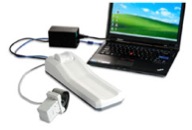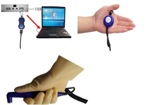Some Thoughts on the Healthcare Revolution in Emerging Markets
The next healthcare technology evolution in China will be the fusion between Western and Oriental medicine.
The next healthcare technology evolution in China will be the fusion between Western and Oriental medicine.
by Kevin Wang, MBA ’13 (05/29/2012)
I still find it difficult at times to grasp the idea that I will be working in New York this summer. For many people this might be an ordinary event, but as someone who grew up in a small town Taiyuan in China, the city of New York only took form in pictures that appeared in magazines and prose written in novels. And yet, this summer I will be working in one of world’s most bustling cities. The feeling of excitement reminded me how I felt when I was living and working in Paris for the very first time – surreal.
Sentiments aside, I am excited by the work that I will be doing. I will be with PwC Healthcare Advisory in New York, working on initiatives related to the Healthcare Reform. What’s even more motivating is that the work will not only be valuable in the US context, but will have value in emerging markets as well, specially in China.
My research on emerging market healthcare solutions started when I was a pre-MBA intern for MediaTek Inc., one of world’s largest mobile chipmaker. Below are some highlights that I believe are worth noting.
In terms of regulatory and business environment, there are three main groups of institutions which are engaged in the further modernization of healthcare: government agencies, including the Ministry of Health, set the overarching direction. Then academic institutions conduct research. Finally individual corporations carry out the commercialization of practical solutions. This business framework is largely similar to that of the US.
Firms that are currently successful in China are the ones that are focusing on combining traditional Chinese medicine (TCM) with western technology. Below are two examples that are gaining attraction from both the industry and the consumer.

The first example is a health tech firm in Shanghai. Shanghai Daosh Med Tech firm has recruited a team of experts in TCM, Western medicine, Computer AI, Robotics, and Optic Tech to design and produce a “Chinese Medicine Digital 4 Way (Look, Smell, Inquire, Pulse) Diagnostic Machine”. Currently the company is capable of handling the entire commercial value chain for this product, including research, production, sales, and services. This device is meant to simulate the evaluation of one’s pulse, a very common TCM diagnostic method.

The second example also came out of Shanghai. Shanghai Renai Tech’s flagship product TCM Electronic Pulse Diagnostic Device functions according to the Traditional Chinese Medical Theory, together with modern computer technology, by testing the energy in the original acupuncture points of 12 meridians in the human body.
The Human Body Analysis Instrument can show the recent energy changes of five key “Zhang” organs and six “Fu” organs. The specific situation of the sub-health state and the sub-health‘s impacts on vitality and creativity of human body can also be obtained through logical data analysis, compared to a set of predefined patterns for the weight/sex/height of the patient.
The two profiles above showcase the adaptation of Chinese medicine enabled by modern technology. I believe that the future opportunities in emerging market such as China will be big enough for both western and eastern medicine, enabled by modern technology. For example, devices such as remote patient diabetes monitors that are gaining popularity in the West, could be combined with remote pulse monitors in delivering all the patient data that physicians need. Who knows, maybe I will even be working on a project in the emerging market in the summer with PwC!
Check out Kevin’s published article on the PwC website!
